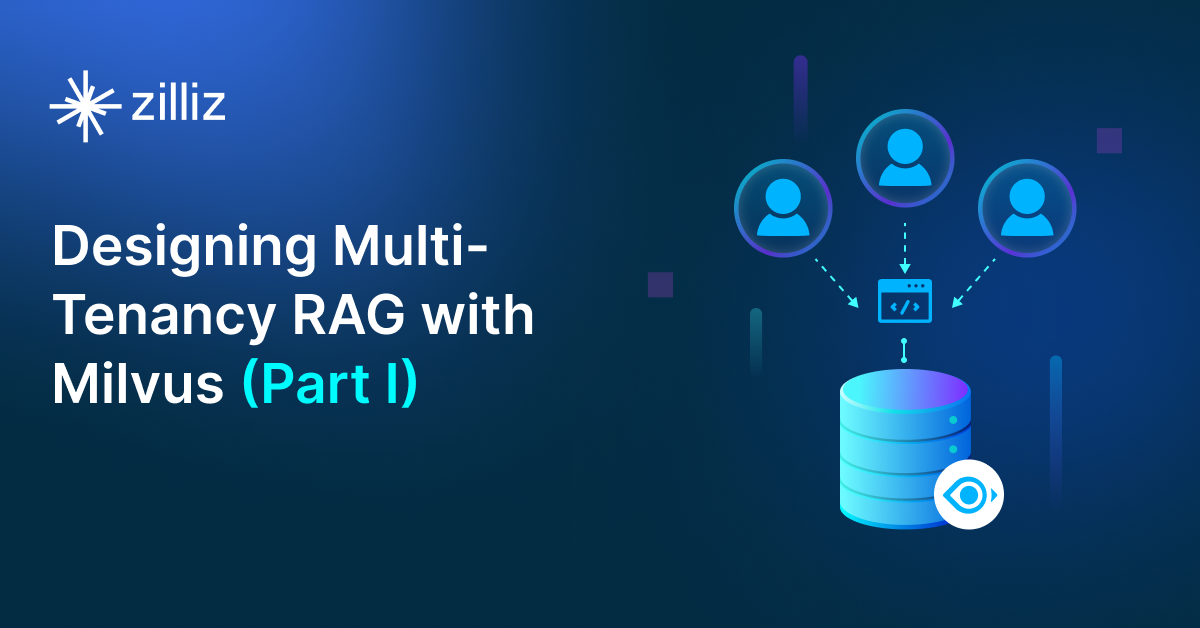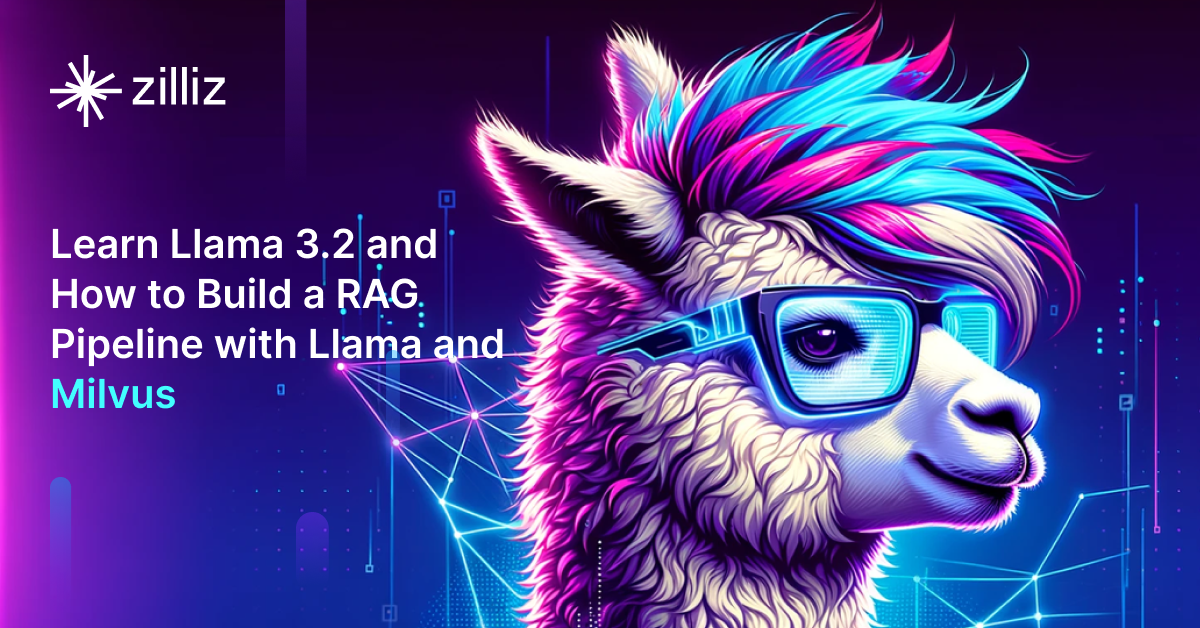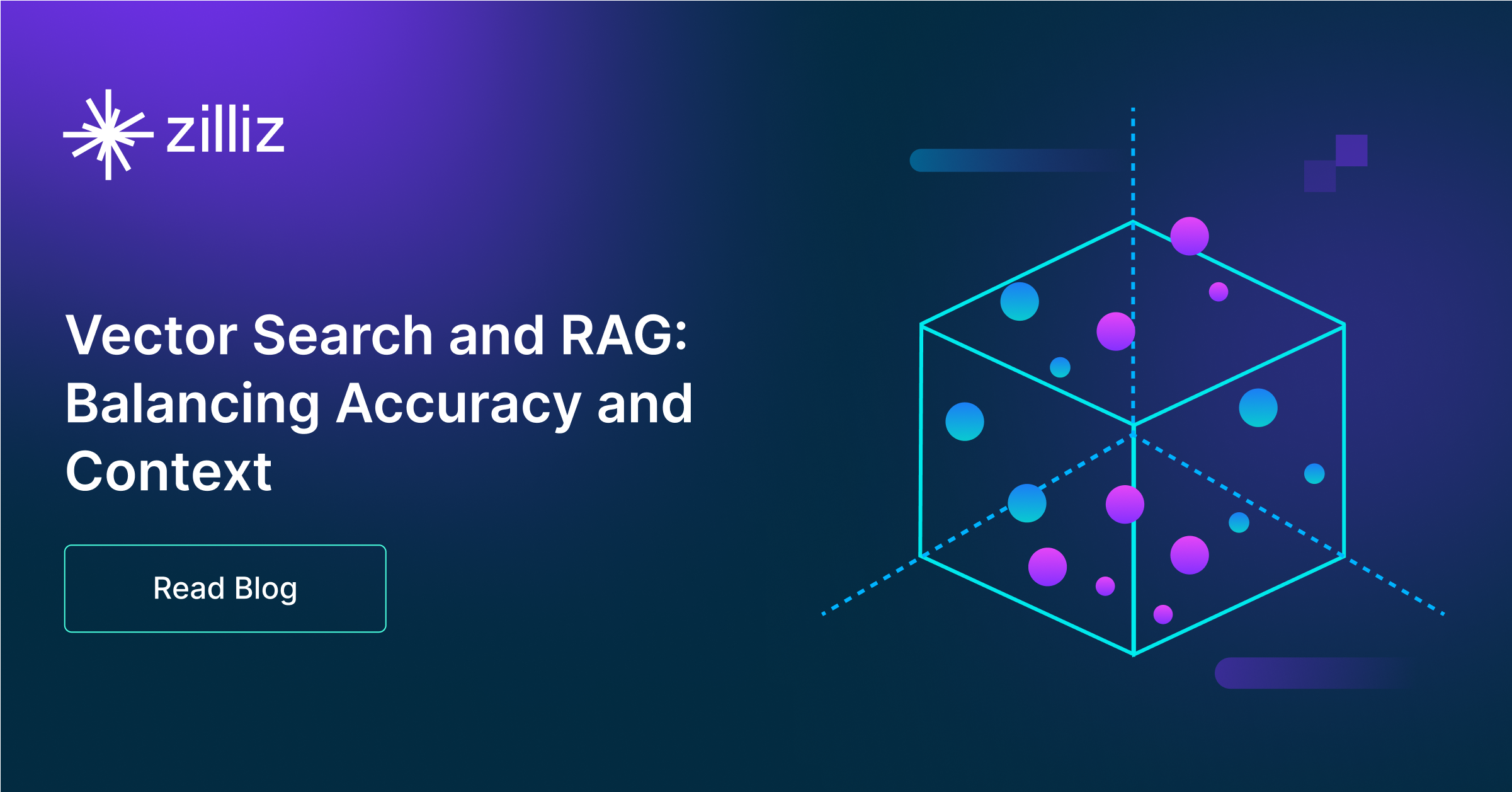Build RAG Chatbot with Haystack, Pgvector, Google Vertex AI Gemini 2.0 Flash Thinking, and Ollama nomic-embed-text
Introduction to RAG
Retrieval-Augmented Generation (RAG) is a game-changer for GenAI applications, especially in conversational AI. It combines the power of pre-trained large language models (LLMs) like OpenAI’s GPT with external knowledge sources stored in vector databases such as Milvus and Zilliz Cloud, allowing for more accurate, contextually relevant, and up-to-date response generation. A RAG pipeline usually consists of four basic components: a vector database, an embedding model, an LLM, and a framework.
Key Components We'll Use for This RAG Chatbot
This tutorial shows you how to build a simple RAG chatbot in Python using the following components:
- Haystack: An open-source Python framework designed for building production-ready NLP applications, particularly question answering and semantic search systems. Haystack excels at retrieving information from large document collections through its modular architecture that combines retrieval and reader components. Ideal for developers creating search applications, chatbots, and knowledge management systems that require efficient document processing and accurate information extraction from unstructured text.
- Pgvector: an open-source extension for PostgreSQL that enables efficient storage and querying of high-dimensional vector data, essential for machine learning and AI applications. Designed to handle embeddings, it supports fast approximate nearest neighbor (ANN) searches using algorithms like HNSW and IVFFlat. Since it is just a vector search add-on to traditional search rather than a purpose-built vector database, it lacks scalability and availability and many other advanced features required by enterprise-level applications. Therefore, if you prefer a much more scalable solution or hate to manage your own infrastructure, we recommend using Zilliz Cloud, which is a fully managed vector database service built on the open-source Milvus and offers a free tier supporting up to 1 million vectors.)
- Google Vertex AI Gemini 2.0 Flash: A lightweight, high-speed AI model optimized for rapid inference and scalable tasks. It excels in real-time applications requiring low latency and cost-efficiency, such as chatbots, content summarization, and data processing. Ideal for enterprises needing fast, reliable outputs without compromising performance in high-throughput environments.
- Ollama nomic-embed-text: A versatile text embedding model optimized for efficient generation of high-dimensional vector representations, excelling in semantic search, clustering, and similarity analysis. Strengths include robust performance on long-context inputs and scalability for local deployment. Ideal for applications requiring accurate document retrieval, recommendation systems, or contextual understanding in resource-constrained environments.
By the end of this tutorial, you’ll have a functional chatbot capable of answering questions based on a custom knowledge base.
Note: Since we may use proprietary models in our tutorials, make sure you have the required API key beforehand.
Step 1: Install and Set Up Haystack
import os
import requests
from haystack import Pipeline
from haystack.components.converters import MarkdownToDocument
from haystack.components.preprocessors import DocumentSplitter
from haystack.components.writers import DocumentWriter
Step 2: Install and Set Up Google Vertex AI Gemini 2.0 Flash Thinking
Using theVertexAIGeminiGenerator with Haystack requires authentication using Google Cloud Application Default Credentials (ADCs). This means your application must be set up with credentials that allow it to access Google Cloud services. If you're not sure how to configure ADCs, check the official Google documentation for setup instructions.
It's important to use a Google Cloud account that has the right permissions to access a project with Google Vertex AI endpoints. Without proper access, the generator won’t work as expected.
To find your project ID, you can either look it up in the Google Cloud Console under the resource manager or run the following command in your terminal.
Now let's install and set up this model.
pip install google-vertex-haystack
from haystack_integrations.components.generators.google_vertex import VertexAIGeminiGenerator
generator = VertexAIGeminiGenerator(model="gemini-2.0-flash-thinking-exp-01-21")
Step 3: Install and Set Up Ollama nomic-embed-text
pip install ollama-haystack
Make sure that you have a running Ollama model (either through a docker container, or locally hosted). No other configuration is necessary as Ollama has the embedding API built in.
from haystack import Document
from haystack_integrations.components.embedders.ollama import OllamaDocumentEmbedder
from haystack_integrations.components.embedders.ollama import OllamaTextEmbedder
text_embedder = OllamaTextEmbedder(model="nomic-embed-text")
document_embedder = OllamaDocumentEmbedder(model="nomic-embed-text")
Step 4: Install and Set Up Pgvector
To quickly set up a PostgreSQL database with pgvector, you can use Docker:
docker run -d -p 5432:5432 -e POSTGRES_USER=postgres -e POSTGRES_PASSWORD=postgres -e POSTGRES_DB=postgres ankane/pgvector
To use pgvector with Haystack, install the pgvector-haystack integration:
pip install pgvector-haystack
import os
from haystack_integrations.document_stores.pgvector import PgvectorDocumentStore
from haystack_integrations.components.retrievers.pgvector import PgvectorEmbeddingRetriever
os.environ["PG_CONN_STR"] = "postgresql://postgres:postgres@localhost:5432/postgres"
document_store = PgvectorDocumentStore()
retriever = PgvectorEmbeddingRetriever(document_store=document_store)
Step 5: Build a RAG Chatbot
Now that you’ve set up all components, let’s start to build a simple chatbot. We’ll use the Milvus introduction doc as a private knowledge base. You can replace it your own dataset to customize your RAG chatbot.
url = 'https://raw.githubusercontent.com/milvus-io/milvus-docs/refs/heads/v2.5.x/site/en/about/overview.md'
example_file = 'example_file.md'
response = requests.get(url)
with open(example_file, 'wb') as f:
f.write(response.content)
file_paths = [example_file] # You can replace it with your own file paths.
indexing_pipeline = Pipeline()
indexing_pipeline.add_component("converter", MarkdownToDocument())
indexing_pipeline.add_component("splitter", DocumentSplitter(split_by="sentence", split_length=2))
indexing_pipeline.add_component("embedder", document_embedder)
indexing_pipeline.add_component("writer", DocumentWriter(document_store))
indexing_pipeline.connect("converter", "splitter")
indexing_pipeline.connect("splitter", "embedder")
indexing_pipeline.connect("embedder", "writer")
indexing_pipeline.run({"converter": {"sources": file_paths}})
# print("Number of documents:", document_store.count_documents())
question = "What is Milvus?" # You can replace it with your own question.
retrieval_pipeline = Pipeline()
retrieval_pipeline.add_component("embedder", text_embedder)
retrieval_pipeline.add_component("retriever", retriever)
retrieval_pipeline.connect("embedder", "retriever")
retrieval_results = retrieval_pipeline.run({"embedder": {"text": question}})
# for doc in retrieval_results["retriever"]["documents"]:
# print(doc.content)
# print("-" * 10)
from haystack.utils import Secret
from haystack.components.builders import PromptBuilder
retriever = PgvectorEmbeddingRetriever(document_store=document_store)
text_embedder = OllamaTextEmbedder(model="nomic-embed-text")
prompt_template = """Answer the following query based on the provided context. If the context does
not include an answer, reply with 'I don't know'.\n
Query: {{query}}
Documents:
{% for doc in documents %}
{{ doc.content }}
{% endfor %}
Answer:
"""
rag_pipeline = Pipeline()
rag_pipeline.add_component("text_embedder", text_embedder)
rag_pipeline.add_component("retriever", retriever)
rag_pipeline.add_component("prompt_builder", PromptBuilder(template=prompt_template))
rag_pipeline.add_component("generator", generator)
rag_pipeline.connect("text_embedder.embedding", "retriever.query_embedding")
rag_pipeline.connect("retriever.documents", "prompt_builder.documents")
rag_pipeline.connect("prompt_builder", "generator")
results = rag_pipeline.run({"text_embedder": {"text": question}, "prompt_builder": {"query": question},})
print('RAG answer:\n', results["generator"]["replies"][0])
Optimization Tips
As you build your RAG system, optimization is key to ensuring peak performance and efficiency. While setting up the components is an essential first step, fine-tuning each one will help you create a solution that works even better and scales seamlessly. In this section, we’ll share some practical tips for optimizing all these components, giving you the edge to build smarter, faster, and more responsive RAG applications.
Haystack optimization tips
To optimize Haystack in a RAG setup, ensure you use an efficient retriever like FAISS or Milvus for scalable and fast similarity searches. Fine-tune your document store settings, such as indexing strategies and storage backends, to balance speed and accuracy. Use batch processing for embedding generation to reduce latency and optimize API calls. Leverage Haystack's pipeline caching to avoid redundant computations, especially for frequently queried documents. Tune your reader model by selecting a lightweight yet accurate transformer-based model like DistilBERT to speed up response times. Implement query rewriting or filtering techniques to enhance retrieval quality, ensuring the most relevant documents are retrieved for generation. Finally, monitor system performance with Haystack’s built-in evaluation tools to iteratively refine your setup based on real-world query performance.
pgvector optimization tips
To optimize pgvector in a Retrieval-Augmented Generation (RAG) setup, consider indexing your vectors using GiST or IVFFlat to significantly speed up search queries and improve retrieval performance. Make sure to leverage parallelization for query execution, allowing multiple queries to be processed simultaneously, especially for large datasets. Optimize memory usage by tuning the vector storage size and using compressed embeddings where possible. To further enhance query speed, implement pre-filtering techniques to narrow down search space before querying. Regularly rebuild indexes to ensure they are up to date with any new data. Fine-tune vectorization models to reduce dimensionality without sacrificing accuracy, thus improving both storage efficiency and retrieval times. Finally, manage resource allocation carefully, utilizing horizontal scaling for larger datasets and offloading intensive operations to dedicated processing units to maintain responsiveness during high-traffic periods.
Google Vertex AI Gemini 2.0 Flash optimization tips
To optimize Gemini 2.0 Flash in RAG, fine-tune input chunking to balance context relevance and token limits—aim for 512–1024 tokens. Use structured queries with explicit filters (e.g., metadata, date ranges) to improve retrieval precision. Adjust temperature (0.1–0.3) and top-p (0.7–0.9) to reduce hallucination while maintaining coherence. Cache frequent retrievals to minimize latency and costs. Preprocess documents to remove noise and enhance embeddings. Test hybrid search (keyword + vector) for complex queries. Monitor token usage and response quality via Vertex AI’s logging tools for iterative tuning.
Ollama nomic-embed-text optimization tips
To optimize Ollama nomic-embed-text in RAG, ensure input text is preprocessed (normalize casing, remove redundant whitespace) and chunked into coherent segments matching the model’s optimal context window. Use batch inference for bulk embeddings to reduce latency, and leverage GPU acceleration if available. Fine-tune embedding dimensions via dimensionality reduction if retrieval speed is critical. Regularly validate embedding quality with domain-specific benchmarks, and cache frequently queried embeddings to minimize redundant computations. Adjust temperature and similarity thresholds during retrieval to balance precision and recall.
By implementing these tips across your components, you'll be able to enhance the performance and functionality of your RAG system, ensuring it’s optimized for both speed and accuracy. Keep testing, iterating, and refining your setup to stay ahead in the ever-evolving world of AI development.
RAG Cost Calculator: A Free Tool to Calculate Your Cost in Seconds
Estimating the cost of a Retrieval-Augmented Generation (RAG) pipeline involves analyzing expenses across vector storage, compute resources, and API usage. Key cost drivers include vector database queries, embedding generation, and LLM inference.
RAG Cost Calculator is a free tool that quickly estimates the cost of building a RAG pipeline, including chunking, embedding, vector storage/search, and LLM generation. It also helps you identify cost-saving opportunities and achieve up to 10x cost reduction on vector databases with the serverless option.
 Calculate your RAG cost
Calculate your RAG cost
What Have You Learned?
By diving into this tutorial, you’ve unlocked the magic of building a RAG system from the ground up! You learned how to weave together powerful tools like Haystack as your orchestration framework, Pgvector as your lightning-fast vector database, Google Vertex AI Gemini 2.0 Flash for generating crisp, context-aware responses, and Ollama’s nomic-embed-text model to transform text into rich, searchable embeddings. Each piece plays a critical role: Haystack acts as the glue, seamlessly connecting components; Pgvector stores and retrieves vectors efficiently; Gemini 2.0 Flash delivers speed and accuracy in responses; and nomic-embed-text ensures your data is encoded with deep semantic understanding. Together, they form a pipeline that turns raw data into intelligent, dynamic answers—like giving your app a supercharged brain! You also explored optimization tricks, like tuning chunk sizes and filtering noisy data, to boost performance and save costs. And let’s not forget that free RAG cost calculator you discovered—now you can experiment fearlessly, knowing exactly how your choices impact your budget.
But this isn’t just about following steps—it’s about opening doors. You’ve got the tools to create applications that understand nuance, retrieve precise information, and converse naturally. Imagine chatbots that feel human, research assistants that dig deeper, or customer support that anticipates needs. The best part? You’re now equipped to iterate, optimize, and innovate. Maybe you’ll tweak embeddings for your niche domain, layer in hybrid search, or fine-tune Gemini for even snappier replies. The possibilities are endless, and the journey’s just beginning. So go ahead—fire up your IDE, experiment with those optimization hacks, and let your creativity run wild. Build something that surprises even you. The future of intelligent apps is in your hands, and trust us—it’s going to be amazing. Let’s make it happen! 🚀
Further Resources
🌟 In addition to this RAG tutorial, unleash your full potential with these incredible resources to level up your RAG skills.
- How to Build a Multimodal RAG | Documentation
- How to Enhance the Performance of Your RAG Pipeline
- Graph RAG with Milvus | Documentation
- How to Evaluate RAG Applications - Zilliz Learn
- Generative AI Resource Hub | Zilliz
We'd Love to Hear What You Think!
We’d love to hear your thoughts! 🌟 Leave your questions or comments below or join our vibrant Milvus Discord community to share your experiences, ask questions, or connect with thousands of AI enthusiasts. Your journey matters to us!
If you like this tutorial, show your support by giving our Milvus GitHub repo a star ⭐—it means the world to us and inspires us to keep creating! 💖
- Introduction to RAG
- Key Components We'll Use for This RAG Chatbot
- Step 1: Install and Set Up Haystack
- Step 2: Install and Set Up Google Vertex AI Gemini 2.0 Flash Thinking
- Step 3: Install and Set Up Ollama nomic-embed-text
- Step 4: Install and Set Up Pgvector
- Step 5: Build a RAG Chatbot
- Optimization Tips
- RAG Cost Calculator: A Free Tool to Calculate Your Cost in Seconds
- What Have You Learned?
- Further Resources
- We'd Love to Hear What You Think!
Content
Vector Database at Scale
Zilliz Cloud is a fully-managed vector database built for scale, perfect for your RAG apps.
Try Zilliz Cloud for Free


